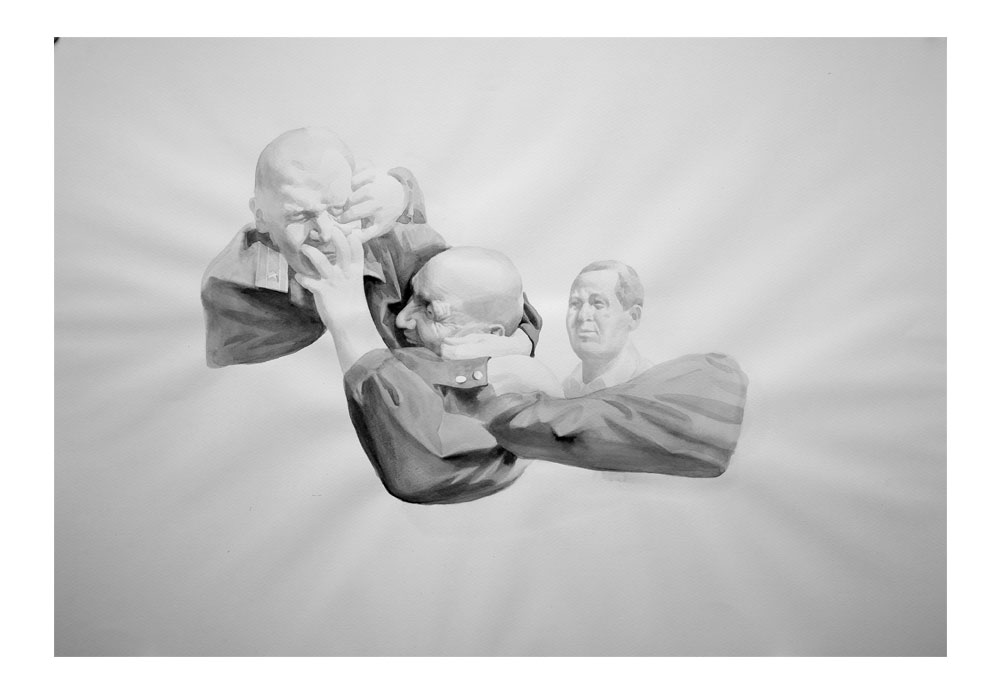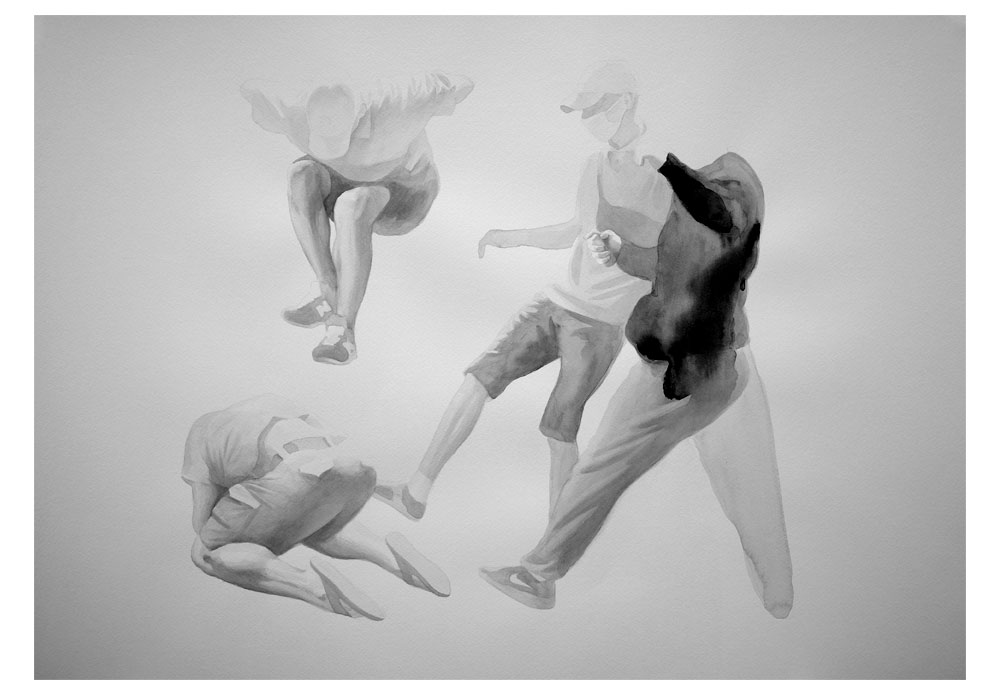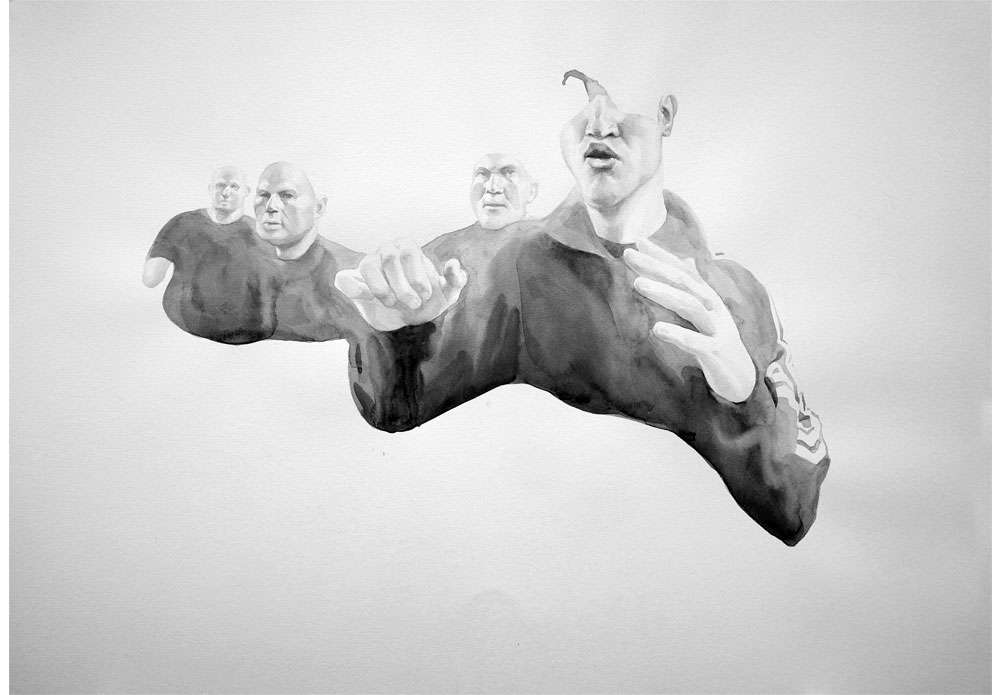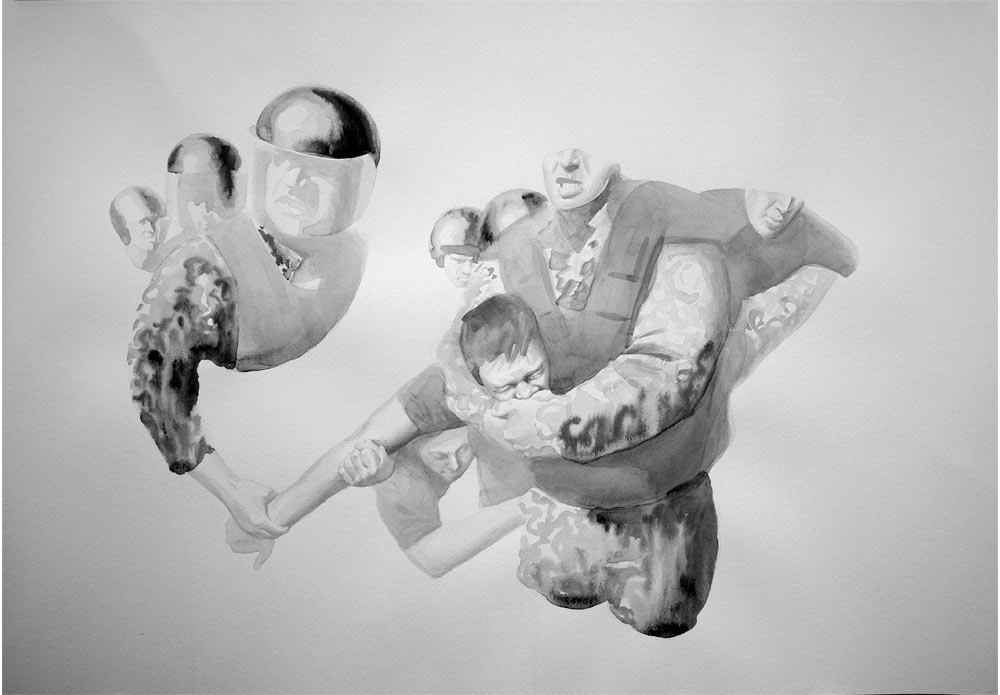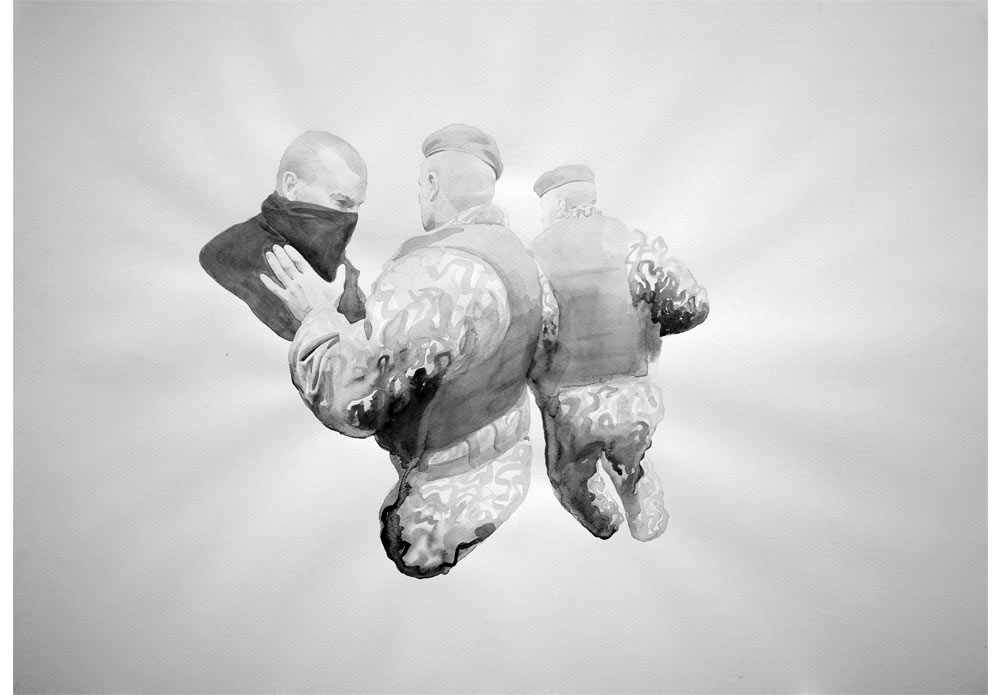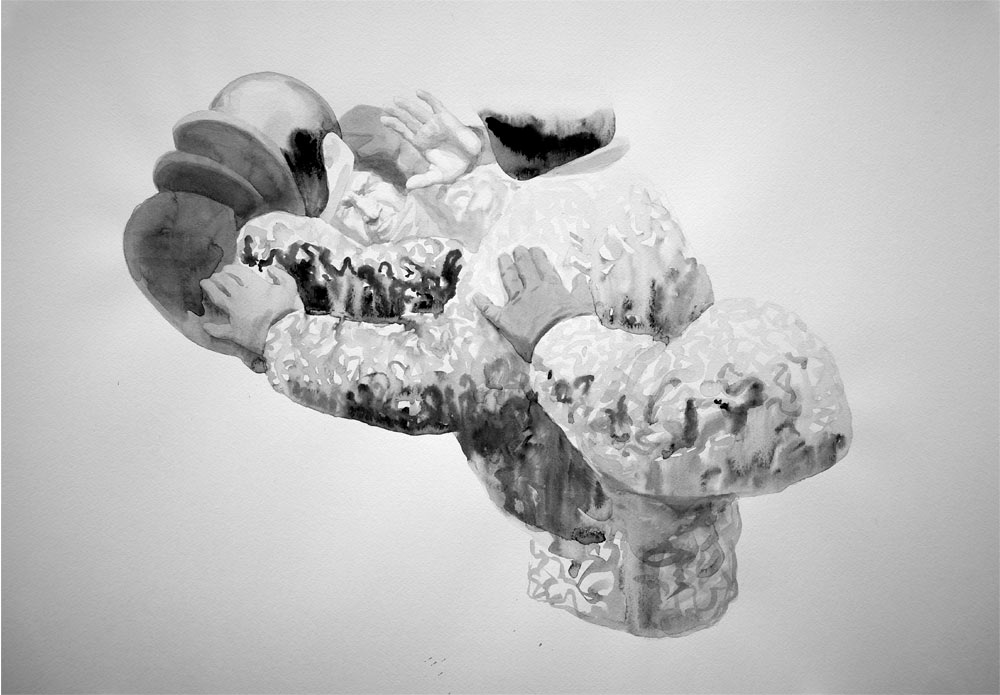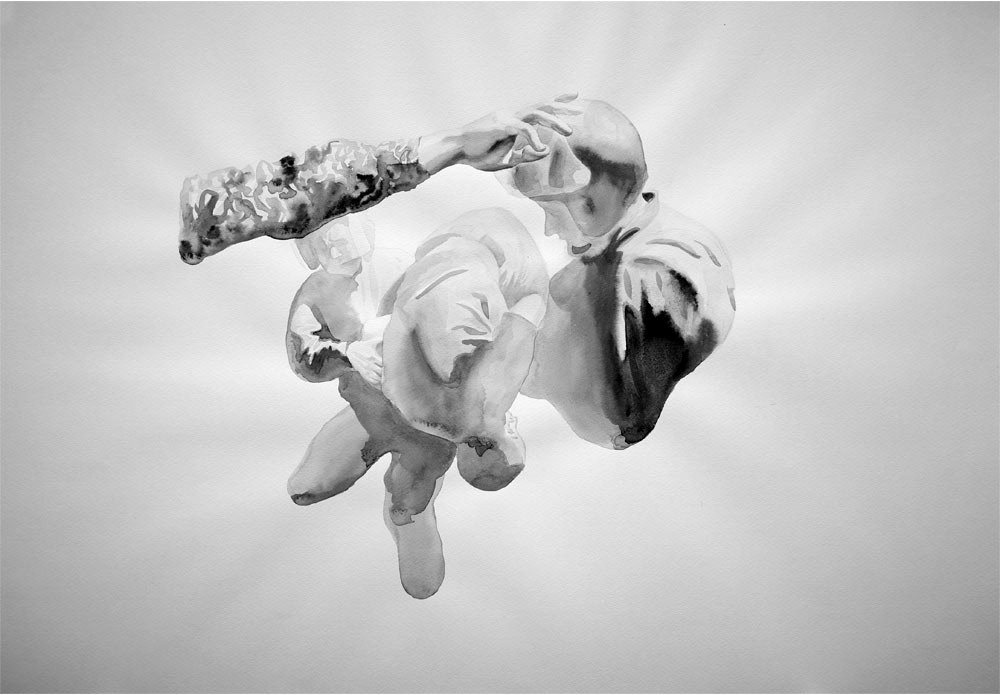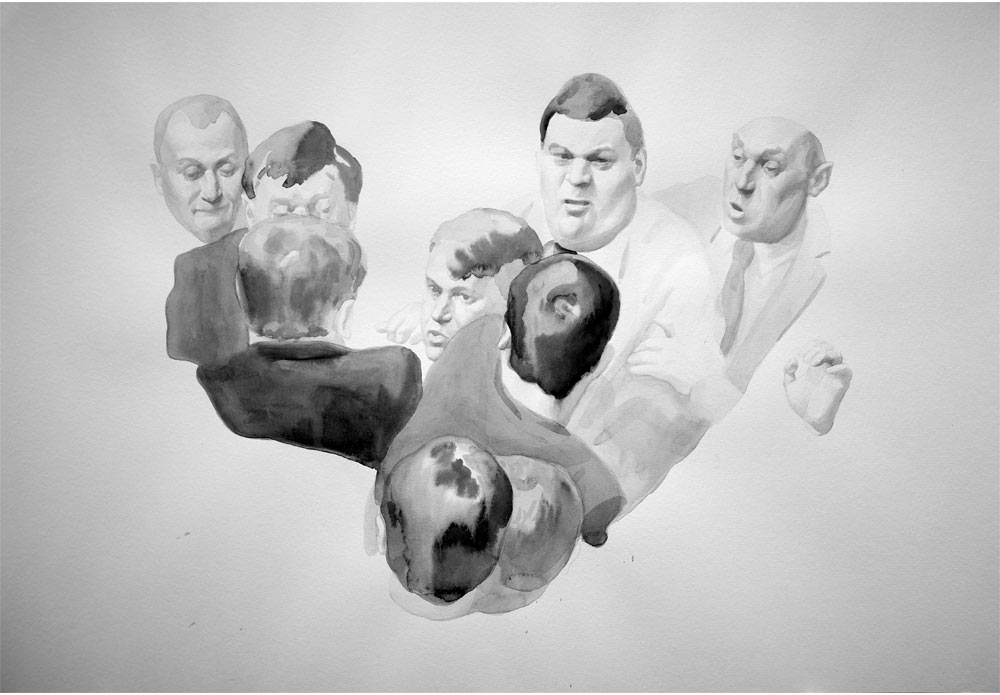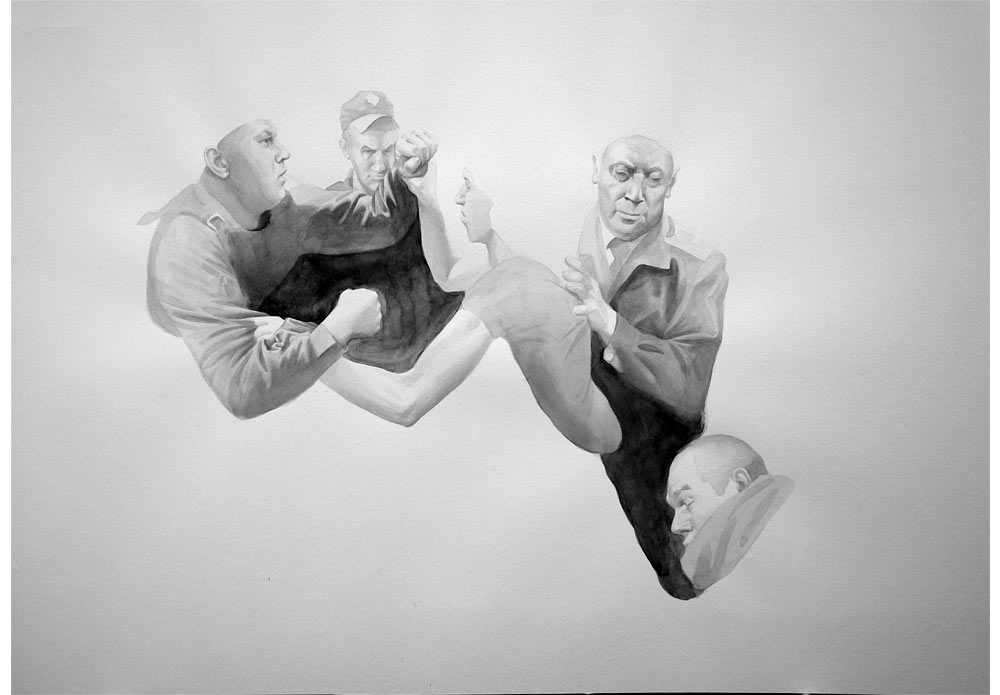—Note: The following conversation took place between January 12 and 19, 2014. Since then, the laws that were passed on Jan. 17 prohibiting public gatherings and limiting free speech in Ukraine have been repealed. The situation is still volatile and changing constantly.
As of November 21, 2013, Kyiv’s Independence Square (Maidan Nezalezhnosti) has been occupied by protesters numbering up to the hundreds of thousands who are demanding drastic changes in Ukraine’s current government. Everyone agrees that police brutality is impermissible, but a kind of hierarchy has come to dominate the protests: politicians and other self-appointed leaders give commands from high on stage while the crowds in the square wait for directions to come from above. These large-scale, predominantly peaceful demonstrations that erupted last fall entered a new phase of civil unrest on January 19. Though triggered by President Yanukovych’s refusal to sign an agreement with the European Union, the protests are the manifestation of tensions that have been building since Yanukovych took office in 2010.
In Ukraine, activism has become a regular part of working in the cultural sphere. Art institutions such as the National Art Museum of Ukraine and the Mystetskyi Arsenal are now sites of petty political interests, stuck between the tradition of institutional conservatism that remains from Soviet times and art-making shaped by the market. Since no Ukrainian institution has consistently provided a space for critical contemporary art, local artistic activism—a zone for free, public expression—is now demanding it.
—Larissa Babij for Guernica
Larissa Babij: Just before the opening of the exhibition Great and Grand last summer at the Mystetskyi Arsenal (Ukrainian for “Art Arsenal”), director and exhibition co-curator Natalia Zabolotna ordered that Volodymyr Kuznetsov’s mural “Koliivshchyna: Judgment Day” be covered in black paint, and that Vasyl Tsagolov’s painting “Molotov Cocktail” be removed from the exhibition for being too politically charged. Getting ahead of accusations of institutional censorship, Zabolotna claimed her act was a “personal performance.” International media immediately picked up the story as members of the local art community raised their voices in protest.
During the exhibition opening, a line of about thirty people holding black rectangles formed before the banner covering Kuznetsov’s mural to call attention to its censorship. Soon afterward, the Kyiv-based Art Workers’ Self-Defense Initiative (ISTM) published an open letter declaring a boycott of the institution until it meets the following demands: “Declare the principles that underlie the activity of Mystetskyi Arsenal as an Institution; legalize relations between the Institution and artists; publicly acknowledge the situation surrounding the works of Tsagolov and Kuznetsov, respectively, as an act of censorship and vandalism; publicly guarantee that similar acts of censorship will not be repeated in the future.”
While only a relatively small number of people decided to join the boycott, the open letter caused heated discussions in the small Ukrainian contemporary art community, provoking much criticism of the boycott initiators for being unconstructive, ineffective, and focusing on their international image at the expense of loyalty to local institutions.
Nikita Kadan: When we launched the boycott, there was at least a sliver of hope of consolidating the art community to stand together in response to the unprofessional manner in which institutions work with artists. The series of actions taken by Mystetskyi Arsenal’s director, Natalia Zabolotna, such as forming an alliance with the Orthodox church; creating an ideological spectacle to “whitewash” the image of the current government; her utter curatorial incompetence in inviting an artist without understanding the critical nature of his work; the demonstrative destruction of his artwork; and the justification given—“Consider this my personal performance,” and, “You mustn’t criticize your motherland, just like you mustn’t criticize your mother”—revealed the institution’s entire methodology and attitude as incompatible with the contemporary artistic process.
But a concerted effort against employing artists in the service of ideology, against infringement of art workers’ rights, against sheer vandalism, did not come about. Instead, the art community united against those of us who pointed out that these phenomena exist. In other words, the most widespread reaction was, “Yes, we understand that this was censorship, but let’s not insist on this term so we don’t lose access to the benefits of Mystetskyi Arsenal.”
Neither democratic representation nor international conventions have overt influence on the laws that govern existence here.
While the art community was silent for those first weeks, save for a few individuals who couldn’t wait to demonstrate their loyalty, what followed was a flurry of polls and interviews, in which art professionals practically lined up to affirm their allegiance to the institution and hurl accusations at the boycotters. Naturally, the lion’s share of this commentary was published in ART Ukraine—a journal founded by MA director Natalia Zabolotna. The ensuing situation was awfully similar to Soviet-era public, collective-shaming tactics, through which cultural actors were compelled to participate and atone for their transgressions. This was heightened by the fact that this parade of loyalty was ordered by a state institution that aspires to monopolize Ukrainian art exhibition and discourse.
Larissa Babij: At the present moment, civil society and public dissent have essentially been banned from Ukraine by a series of laws signed by President Yanukovych on January 17. Public demonstrations and gatherings are prohibited and both libel and the “dissemination of extremist materials,” concepts which can be interpreted very broadly, are punishable by years in prison. We can now look back at the exhibition Great and Grand as foreboding what is happening today. Before the opening, eight activists who were protesting against the consolidation of church and state outside Mystetskyi Arsenal were immediately arrested. This exhibition—part of Ukraine’s government-sponsored celebration of the 1025th anniversary of the baptism of Kyivan Rus, and partially funded by high-ranking clergy from the Ukrainian Orthodox Church (Moscow Patriarchate)—was a glaring sign that the country’s leading art institution was being used in the service of a state ideology that, like Russia’s, favors close ties to the Church.
Nikita Kadan: The activists who were arrested near Mystetskyi Arsenal were protesting against clericalism, which along with the use of culture for ideological purposes is what has led to censorship. The rise in ideology is a natural accompaniment, if not a precursor, to increasing police control. But Ukraine has always vacillated between ultraconservatism—usually ecclesiastical—and the imitation of something “European.” In the case of art, this meant that the Great and Grand exhibition and an international biennale were held in the same Mystetskyi Arsenal space. Through this careful balance between Western values and Orthodox spirituality, the reigning government has effected an untenable way of life. Neither democratic representation nor international conventions have overt influence on the laws that govern existence here. This is not the result of a prolonged isolation from the rest of the world, like Belarus or North Korea, but of the continual oscillation between spheres of influence.
Larissa Babij: As long as “something civilized” is sufficiently present, Russian-influenced initiatives can also be randomly implemented. But both kinds of cultural practice—rooted elsewhere and only borrowed to put on display for the Ukrainian audience—are imitations. Just like the promises institutions make to follow international conventions. It comes down to a policy of unpredictability, which gives those in power the upper hand.
Nikita Kadan: Inconsistency characterizes the high-handedness of power here. It’s an element of style. Zabolotna acted completely in the spirit of the powers that she serves. While Zabolotna and her supporters keep insisting on the “need for dialogue,” they refuse to call their actions by their proper name: censorship. Censorship exists, and is even admitted to, but only as long as the word “censorship” isn’t uttered.
Larissa Babij: By insisting that Mystetskyi Arsenal regulate its functioning as an institution, the ISTM boycott is genuinely calling for institutional reform, but we cannot read the proposition as merely oriented towards achieving a future goal. The boycott’s existence already acts to reveal the discrepancy between the institution we would like to work with and the actual state of affairs. And it is this very gesture—articulating what everyone knows but nobody talks about—that elicits a response, one that is unpredictable and by no means guaranteed to lead to the desired result.
We refuse to take the Ukrainian art world as an island with its “own rules,” separate from the rest of the world, and are beginning to examine our “internal problems” through a common lens.
Nikita Kadan: It’s clear that the withdrawal of the first invited curators of the Second Kyiv International Biennale of Contemporary Art (ARSENALE 2014) after the publication of ISTM’s open letter was not the result of the letter’s clout or heightened publicity; it was only a statement by a small group of people on a public blog. It was the obvious indecency of the realities described in the letter that forced them to withdraw. The reaction of the representatives of the international art community, who found themselves directly involved in the controversy around MA, showed that they recognized the degree of unprofessionalism and injustice in Zabolotna’s actions and would not like to associate with such behavior—which, however, does not indicate a readiness to violate conventions of institutional cooperation, reject elements of institutional infrastructure, or abstain from using them.
Larissa Babij: Yes, the first pair of invited curators, Boris Groys and Maria Lind, declined the job, but Groys formulated his resignation in a way that not only evaded criticizing the institutional politics of Zabolotna’s Arsenal, but also dismissed the entire Ukrainian contemporary art scene’s “internal problems” as irrelevant to the international art world, and beyond the scope of its concerns. In conclusion, he also insisted that his withdrawal from curating ARSENALE 2014 was not in recognition or support of the ongoing boycott of MA.
Nikita Kadan: His statement dismisses the boycott as too local, when instead the boycott held the institution accountable to international standards, not home-grown ones. Specifically, we refuse to take the Ukrainian art world as an island with its “own rules,” separate from the rest of the world, and are beginning to examine our “internal problems” through a common lens.
Larissa Babij: What’s strange is the very notion that there are some particular “Ukrainian rules” and other rules for the “rest of the world.” Groys claims that it is impossible to have “a serious, international discussion platform” while Ukrainians are in the midst of dealing with their “internal” problems, when in fact institutional censorship, and the relationship between cultural institutions and their donors—be it state, church, corporate sponsors, or individuals—are by no means “local” issues.
Nikita Kadan: But it is in Ukraine that these problems take on an exotic, monstrous form. Exoticism sparks interest, but only as long as you can look at it from outside without being implicated in it. The curators could have played the role of independent researchers were it not for the genuinely outsider position of those boycotting.
Larissa Babij: Instead, the boycott’s demand that MA adhere to “ideal” standards of operation brings the problem of artist-institution relations into the sphere of a public discussion that reaches beyond the exotic locale of Ukraine. Acts of censorship, unregulated and uncompensated artistic labor, and conflictual institutional relationships occur frequently in the “democratic world,” but somehow we aren’t repulsed by them in the same way. Speaking out against such acts requires courage at the risk of ridicule or exclusion from the system or group, be it professional colleagues or fellow protesters.
Nikita Kadan: To return to the unpredictability principle at work, the people who supported Zabolotna and ostracized the boycotters for “undermining the Ukrainian scene in exchange for European grants” were the very same who adorned themselves with ribbons and EU symbols and went off to protest in Euromaidan [the demonstrations in Ukraine]. Somehow the contradictory nature of doing so escaped them. I doubt they had a change of heart, but how do they reconcile participating in the ideological design of Yanukovych’s government by uncritically supporting Mystetskyi Arsenal on the one hand, and protesting against that very same government on the other?
Larissa Babij: You’re talking about surfaces that mask obscurity. What really lies beneath? Unscrupulousness? Indecision? Apathy? Opportunism? We’ll never know.
The division between the personal and political, where the political must be collective and unified, is also present on the Square. The idea that the personal is political, that a social body, be it the art community or an activist community, could be and must be composed of bodies that think independently and critically, is a very marginal one in Ukraine today.
It is in fact a provocation to think beyond the dominant position, to look at the status quo from another critical position, to consider that things can be otherwise.
The artistic gesture of one person speaking for the entire situation, or one collective subject, as in the MA boycott, with its implication that there could be many dissenting voices, is often perceived as a provocation. And it is in fact a provocation to think beyond the dominant position, to look at the status quo from another critical position, to consider that things can be otherwise.
In its manifesto, ISTM asserts: “In a country that declares democracy the preferred mode of interaction, we, as art workers, must impact the formation of new cultural policy principles and how they are put into practice.” One of our immediate tasks is to hold Ukrainian cultural institutions accountable to the claim that they function in a democratic country, although it’s unclear for how long we can still pretend we live in a democratic country. But aren’t we also—through our actions, statements, gestures—proposing a model for what these democratic practices and relations with the institutions could be?
“Positive” statements on what an institution like Mystetskyi Arsenal should and can be like invites discussion, provokes the institution and the artistic community to think about their responsibilities to each other and the public, and proposes other possibilities. It’s an effort to keep opening a space for critical reflection, one that is otherwise filled by state ideology. Unaffected, MA has replaced Groys and Lind and is moving forward with plans for the upcoming biennial ARSENALE 2014. Last November, they announced that Georg Schollhammer and Hedwig Sachsenhuber will lead preparations.
There seems to be something similar in MA’s tactics with the boycott and those of Yanukovych’s government with the protesters on Maidan. Both “authorities,” rather than acknowledging the need for systemic changes, have chosen to hold their position of being in the right and to try and tire out their opponents.
Nikita Kadan: Overall, the boycott proved to be extremely uncomfortable for the Ukrainian scene. It did not allow the Mystetskyi Arsenal to relegate its acts of censorship to the archives and write them off as the “deeds of days gone by,” counting on everyone else forgetting, on the scandal “cooling off,” on the desire for new events, and on the idea that such an alluring space cannot stay empty for long.
Larissa Babij: What we are doing with ISTM is opposing the hierarchical power structure as such, where a small group of authorities think and act for some undifferentiated “mass” waiting to be told what to do. As art workers, we continue to practice and defend the right and responsibility of each person to think and act for themselves. We make no claims on the empty space designated for a leader. On the contrary, our work is aimed at creating open spaces for reflection on the very conditions that fill that space with restrictions, ideology, or events. Such a “thinking community” cannot be dictated from above. It can only expand horizontally on an individual basis, as a series of individual revolutions.
After nearly two months of merely standing in Maidan, Ukrainian protesters have decided to take action, following the lead of several self-organized groups. While the nationalist movement Right Sector claims to have filled the vacuum at the top left open by the ineffectual “leadership” of opposition politicians and other authoritative voices calling out from onstage, the people stepping up to fight with government forces and circulating around the city center are by no means unified in their ultimate visions of what Ukraine could be. We can no longer rely on any expectations to plan for the next day or hour; we can only continue to think and act in uncertainty and with the belief that others are doing the same.
Larissa Babij lives in Kyiv and works with Ukrainian contemporary art as a translator, writer, and curator, and often collaborates with artists to organize experimental projects. Together with the performance group TanzLaboratorium, she has been producing the annual PERFORMATIVITY Educational Art Project since 2011. She is a member of the Art Workers’ Self-Defense Initiative (ISTM).
Nikita Kadan is an artist based in Kyiv. In 2007, he graduated from the National Academy of Fine Art (Kyiv). Since 2004 he has been a member of the REP (Revolutionary Experimental Space) artists group. He is also co-founder and a member of HUDRADA, a curatorial and activist group founded in 2008. Since 2012, he is a member of the Art Workers’ Self-Defense Initiative. Kadan often works in interdisciplinary collaboration with architects, human rights watch activists, and sociologists.

